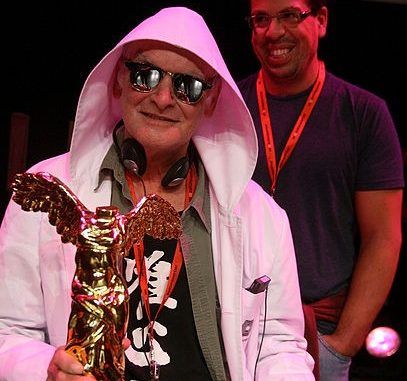
From The International Science Times (source link): An artist plans to insert a DNA-encoded version of Wikipedia into the roots and leaves of a four-thousand-year-old strain of apple to create a living tree of knowledge as a metaphor for the forbidden fruit of the Garden of Eden. The goal of “bio-artist”, Joe Davis, who is doing work at George Church’s genetics lab, is to create a living tree of knowledge
Davis plans to encode sequences using the genome of all living things as expressed in the four letters of DNA: “a,” “c,” “g,” and “t,” which can be “written” into the genome’s junk DNA portion. The process of inserting Wikipedia would involve using these letters to “write” around the apple’s own genome, which would be kept intact, Davis told The New Yorker. Davis would use a type of bacteria that can insert its genome through plant cell walls to insert the DNA-encoded Wikipedia into apple saplings. Davis envisions those saplings being grafted onto apple stock which would then grow into adult trees.
A baby step in that direction was made two years ago, when Davis’s lab chief, George M. Church, published a paper in the journal Science demonstrating it’s possible to use genetic code as a language to publish books. To prove it, Church published one of his own books in genetic code. But using living objects as repositories of genetic language is a little trickier. Bacterial DNA can hold the equivalent of a few thousand words, but the entire English version of Wikipedia, about two and a half billion words, would have to be spread across about 666,000 trees, so Davis may have been underestimating when he told The New Yorker, “I can fit the whole Wikipedia in a small forest, in-let’s call it a very large grove.” Then there’s the fact that the consuming of genetically-engineered apples would have to be approved by the U.S. Department of Agriculture.

BYPASS THE CENSORS
Sign up to get unfiltered news delivered straight to your inbox.
You can unsubscribe any time. By subscribing you agree to our Terms of Use
This is not the first time Davis, 63, a paraplegic who stands on an aluminum peg leg fitted with a laboratory flask’s rubber stopper, has come up with interesting ideas. After Hurricane Katrina, designed a 106-foot-tall steel tower that would capture lightning strikes and throw them defiantly back at the heavens, and investigated the possibility of silkworms to spin gold and glass.
Latest posts by Royce Christyn (see all)
- Irish Slaves – What The History Books Will Never Tell You - November 1, 2017
- Government Op Who Predicted Super Bowl Score Warns Of Nuclear War - February 18, 2017
- Video: Why Voting Doesn’t Change Anything & Democracy Is A Lie - May 7, 2016

Be the first to comment